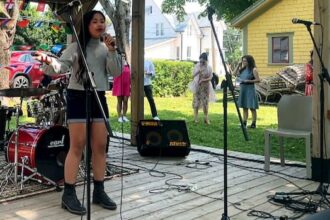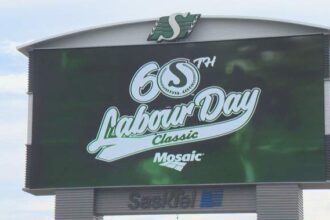In a vibrant display of cultural pride and community solidarity, Toronto’s newest cultural district, Little Iran, was officially inaugurated Saturday afternoon with traditional music, dance performances, and heartfelt speeches. Located along Yonge Street between Finch and Steeles avenues, the district represents a milestone for the estimated 97,000 Iranians who call the Greater Toronto Area home.
“This is more than just a designation on a map—it’s recognition of the immense contributions Iranian-Canadians have made to our city’s cultural mosaic,” said Mayor Olivia Chow during the opening ceremony. The mayor, flanked by local business owners and community leaders, highlighted how the district will serve as both a cultural anchor and an economic driver for the neighborhood.
The celebration drew hundreds of attendees despite chilly temperatures, with performances of traditional Persian dance and live music creating a festive atmosphere. Local restaurants offered samples of Iranian cuisine, from fragrant saffron rice to sweet baklava, giving visitors a taste of Persian hospitality.
For many Iranian-Canadians, Little Iran represents a powerful symbol of belonging during challenging times. Maryam Rashidi, who immigrated to Canada in 2010, shared her emotional connection to the new district. “With everything happening in Iran right now, having this space recognized feels like our culture and identity are being affirmed,” she told CO24 Canada News.
The designation follows years of advocacy by local business owners and community organizations. The Iranian-Canadian Business Directory reports that over 300 Iranian-owned businesses operate in the area, creating a natural cultural hub that has now received official recognition.
City councillor Lily Cheng, who championed the initiative, emphasized the economic benefits the designation will bring. “Cultural districts like Little Iran become destinations that attract tourism, support small businesses, and create jobs,” Cheng explained to CO24 Business. The area already draws visitors seeking authentic Persian restaurants, specialty grocery stores, and cultural experiences.
Beyond economics, the district serves an educational purpose. “Many young Iranian-Canadians who were born here or arrived as children now have a place where they can connect with their heritage,” said Dr. Reza Moridi, former Ontario Minister of Research, Innovation and Science. Community leaders hope the district will help preserve cultural traditions while fostering cross-cultural understanding.
The timing of the inauguration holds particular significance against the backdrop of political tensions in Iran. While the celebration focused on culture rather than politics, many attendees expressed solidarity with ongoing human rights movements in their homeland.
As Toronto’s cultural landscape continues to evolve, Little Iran joins established districts like Little Italy, Greektown, and Chinatown in representing the city’s multicultural identity. The question remains: how will these distinct cultural enclaves shape Toronto’s future as global migration patterns continue to transform urban centers worldwide?







